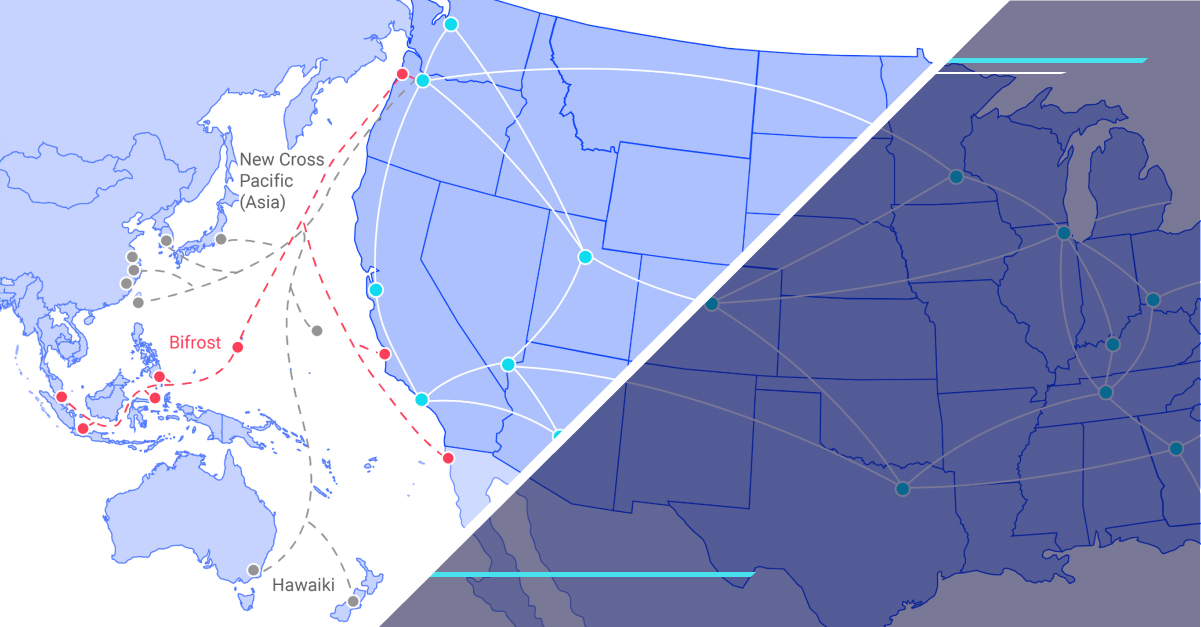Colocation vs cloud: Key differences and how to build the right strategy

Colocation vs cloud is a choice between keeping your hardware in a secure, third-party facility you control or running workloads on infrastructure owned and managed by a cloud provider. If you manage critical IT systems, you’ve probably weighed these options before. Both have clear advantages, and the best fit comes down to your goals, budget, and compliance requirements.
In this post, we’ll break down what each option offers, where they differ, and how a hybrid model can combine the strengths of both. You’ll get a side-by-side comparison, practical considerations like total cost of ownership and regulatory needs, and a straightforward framework to help you decide. We’ll also share how one municipality uses a hybrid approach to protect essential services while staying ready for growth.
Whether you’re starting from scratch or rethinking your current setup, you’ll walk away with a clearer picture of which direction to take.
Understanding the basics
Before you can compare colocation vs cloud, it helps to define what each one actually means.
Colocation is when you place your servers, storage, and networking gear in a professionally managed data center, paying for the space, power, cooling, and physical security that keeps it running. You still own and maintain the hardware, which means you have full control over configurations and upgrades. If you need a refresher, our guide on what is colocation covers the concept in more detail, including common use cases.
Cloud computing shifts your workloads to infrastructure owned and operated by a provider. Instead of buying and maintaining physical hardware, you rent computing resources and pay for what you use. Within the cloud, you can choose from different deployment models. A private vs public cloud comparison shows how private environments give you more control and isolation, while public options offer flexibility and scalability at a lower upfront cost.
If you’re still shaping your approach, our cloud strategy explained resource can help you align technology choices with business goals so you’re not just moving workloads for the sake of it.
Colocation vs cloud: Side-by-side comparison
Both options let you run critical workloads without building your own data center. The key differences are about control, cost, scale, security, and performance.
| Factor | Colocation
| Cloud
|
Ownership & control
| You own and manage the hardware, OS, and configurations. The facility provides space, power, cooling, and physical security.
| The provider owns and manages the infrastructure. You manage apps, data, and configurations within their platform.
|
| Cost models | CapEx for gear plus recurring fees for space, power, and connectivity. Predictable monthly facility costs. Hardware refresh is on you. | OpEx with pay‑as‑you‑go pricing. No hardware purchases. Costs can rise with usage, storage growth, and data egress. |
| Scalability & flexibility | Scale by adding hardware and contracted space/power. Lead times apply. | Scale up or down almost instantly by adjusting instance sizes and services. |
| Security & compliance | Strong physical security. You control host hardening, segmentation, and tool choices. Good fit for strict or custom controls. | Broad security features and certifications. Compliance depends on correct configuration and shared‑responsibility practices. |
| Performance & latency | Consistent performance with direct hardware control. You choose interconnects and network providers. | Performance depends on provider architecture, region, and network routing. Easy access to managed services near compute. |
Ownership & control
In colocation, your team controls the hardware stack while the data center handles the environment. If you want that level of control in a facility built for uptime, partnering with a colocation services provider gives you space, power, cooling, and physical security without running your own building. In the cloud, you trade hardware control for speed and convenience. You configure services and focus on applications while the provider maintains the underlying infrastructure.
Cost models
Colocation often includes a capital purchase for servers and storage, plus monthly fees for racks, power, and connectivity. Over time, this can deliver a stable total cost of ownership, especially for steady workloads. You can also choose different facility pricing structures, such as retail vs wholesale colocation, depending on footprint and power needs. Cloud shifts spending to operating expense with metered billing. It is simple to start and scale, but costs can spike with always‑on instances, storage growth, and egress.
Scalability & flexibility
Colocation scales by adding gear and reserving more space or power. That takes planning but gives you exact control over specs and configurations. Cloud scales on demand. You can right‑size resources in minutes and experiment with new services without procurement cycles.
Security & compliance
Colocation puts you in charge of host security, segmentation, and monitoring, while the facility delivers layered physical protections. This is useful for strict regulatory or data residency requirements that call for custom controls. Cloud providers offer mature security features and broad certifications. Meeting your obligations still depends on how you configure identity, network policies, encryption, and logging.
Performance & latency
Colocation lets you tune performance at the hardware level and choose carriers, peering, and interconnects that minimize latency to users, partners, and clouds. Cloud performance varies by instance type, region, and workload profile, but you gain proximity to managed services that can accelerate development and analytics.
Why hybrid (colocation + cloud) is the best of both worlds
For many IT leaders, the real question isn’t colocation vs cloud; it’s how to combine them. A hybrid model lets you place each workload in the environment where it performs best, balancing control with agility. Sensitive, steady-state systems can run in colocation where you own the hardware and meet compliance requirements, while variable or seasonal workloads can live in the cloud for quick scaling.
Use case: Safeguarding operations
A growing municipality in the western United States needed to safeguard essential operations, including public safety services, while also preparing for future growth. By moving mission-critical infrastructure into Flexential colocation facilities, they gained a secure, reliable environment with the capacity to scale. From there, they could connect to cloud platforms as needed, enabling a hybrid setup that supported day-to-day reliability while providing the flexibility to expand or add new services without disrupting operations.
What a hybrid model looks like in practice
A well-designed hybrid environment links colocation infrastructure with one or more cloud platforms through high-performance network connections. For example, your ERP system might run on dedicated hardware in colocation for maximum uptime, while your customer-facing applications leverage the scalability and reach of public cloud. Secure, low-latency connections keep data moving efficiently between the two environments so users get a seamless experience.
How Flexential integrates colocation and cloud
Flexential’s FlexAnywhere platform unites colocation, cloud, connectivity, data protection, and professional services into a hybrid-ready ecosystem. It spans 40+ data centers in 18+ markets, all connected by a 100 Gbps private backbone.
Through Interconnection and Cloud Fabric, you can establish private, low-latency links from your colocated systems to AWS, Microsoft Azure, Google Cloud, Oracle Cloud, and hundreds of carriers.
Flexential Fabric adds software-defined interconnection services, accessible through the Flexential Xperience Platform (FXP). You can provision or adjust connections on-demand, often in hours instead of weeks.
This setup lets you:
- Create secure, high-performance cloud links from your colocation footprint
- Keep latency low and performance consistent through a controlled backbone network
- Scale your hybrid resources quickly with flexible on-ramp options
How to design your strategy: Key decision factors
Choosing between colocation, cloud, or a hybrid setup isn’t just a technical decision. It’s a business choice that affects cost structure, compliance, risk, and your ability to adapt over time. A clear strategy keeps you from getting locked into the wrong model or overspending on resources you don’t need.
5 key questions to ask your IT leadership team
- What are our compliance and data residency requirements?
If you operate in a regulated industry or handle sensitive data, your infrastructure location and control model might be dictated by law. - What’s our true total cost of ownership (TCO)?
Look beyond monthly invoices. Include hardware refresh cycles, staffing, training, and network costs when comparing models. - Where do we need flexibility most?
Some workloads are stable for years, while others spike seasonally or unpredictably. Decide which should live in a fixed, owned environment and which belong in the cloud. - What are our performance priorities?
Low-latency applications, like financial trading or real-time analytics, might require proximity to users or specific interconnection options. - How will this decision affect business continuity?
Map out failover and disaster recovery plans. Can your chosen model keep critical services online during an outage?
Common mistakes to avoid
- Underestimating network costs and complexity: In hybrid environments, bandwidth, cross-connects, and cloud egress fees can add up fast. Factor these into your budget early.
- Ignoring the compliance angle until it’s too late: Moving workloads without confirming security controls and residency compliance can result in costly remediation or fines.
- Overcommitting to a single environment: Locking everything into one model can limit your options later. Hybrid designs can help you shift workloads without starting from scratch.
- Skipping real workload analysis: Don’t just “lift and shift” everything to the cloud or colocation. Analyze workload patterns to place them where they perform best.
- Neglecting disaster recovery planning: Colocation and cloud both offer strong redundancy options, but only if you design for them. Test failover processes regularly.
The must-knows before you choose
Colocation vs cloud isn’t about choosing a winner. It’s about finding the right balance for your workloads, budget, and long-term strategy. Colocation offers control and compliance advantages, cloud delivers speed and scalability, and a hybrid approach can give you the best mix of both.
Key takeaways
- Match workloads to the environment where they perform best.
- Consider total cost of ownership, not just monthly invoices.
- Factor in compliance, latency, and disaster recovery from the start.
- Keep your strategy flexible so you can adapt to future needs.
If you want to dive deeper, explore our colocation services provider page or browse related resources. When you’re ready to discuss your goals and challenges, our team is here to help you design a solution that works for your business. Contact sales to get started.
FAQs about colocation vs cloud
What’s the difference between colocation and cloud hosting?
Colocation means you place your own hardware in a third-party data center and control the systems yourself. Cloud hosting uses infrastructure owned and managed by a provider, and you rent computing resources instead of owning hardware.
Which is more cost-effective: colocation or cloud?
It depends on workload patterns and timeframes. Colocation can deliver predictable costs for steady workloads, while cloud can be more cost-effective for variable or short-term needs.
When should a business choose colocation over cloud services?
Colocation is often a better fit for strict compliance requirements, predictable workloads, or when you need full control over hardware configurations.
What are the advantages of a hybrid colocation-cloud model?
Hybrid models let you run stable, sensitive workloads in colocation and use the cloud for scalable, on-demand workloads. This offers both control and flexibility.
How can Flexential help design a hybrid IT strategy?
Our hybrid-ready infrastructure combines colocation, cloud connectivity, and interconnection services so you can design a solution that meets your performance, compliance, and growth goals.






